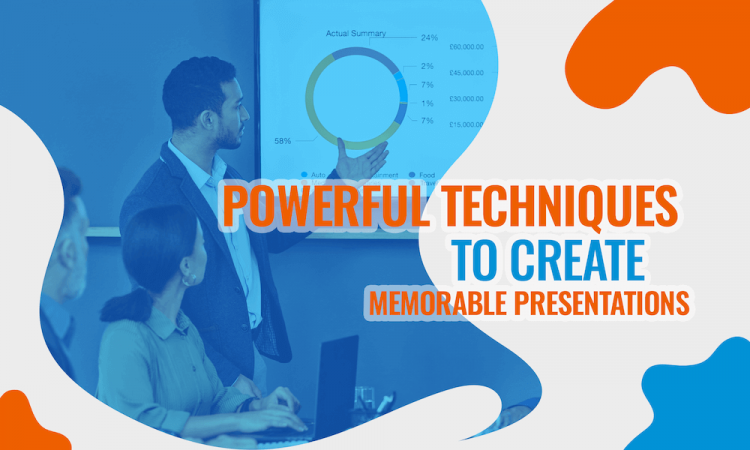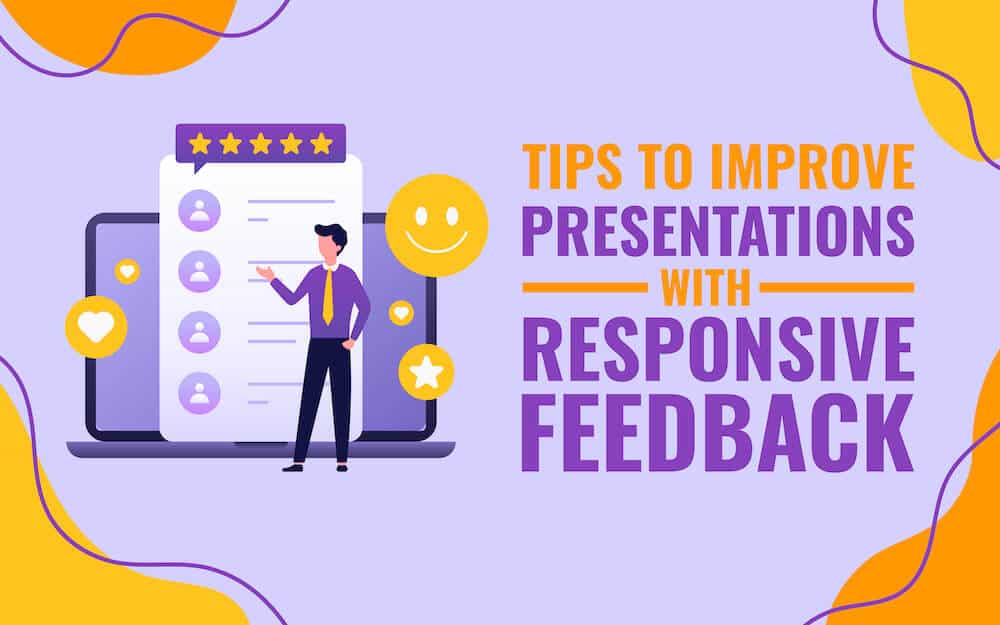
Crafting a presentation is not an easy process.
You have to pick your content from a pool of information. Structure it in the most impactful way possible, i.e., work on getting the right visuals and relevant data and aligning all of that like puzzle pieces fitting together perfectly.
If you get the content right – then comes the next part of being an impactful orator: delivering the presentation as planned, being mindful of the body language, and countless other things.
Let’s say you have perfected all these steps with consistent practice. People always come up and congratulate you for delivering a solid presentation. But you realize, during conversations, that they have forgotten most parts of it, just after a couple of days.
How would that make you feel?
Is it really a successful presentation when people don’t even remember (after a few days) what you said? Also, they won’t be taking the needed action if they don’t remember it much.
Presenters generally struggle with the biggest fear – the audience will forget the content.
This article will let you walk through some powerful practices and techniques that will help you tackle the issue effectively. By following the techniques, you will be able to create powerful content that people will not forget. Let’s read on to know how.
Techniques to Create Memorable Presentations
1. The more visual your content is, the more memorable it will be
The Picture Superiority Effect establishes that our ability to recall visuals is much stronger than our ability to recall written or spoken words. According to the Social Science Research Network, 65% of humans are visual learners (citation: Forbes). In another study, researchers found that participants were able to remember those objects that were presented as pictures over objects with words.
So, how does it help your presentation?
Pairing up your ideas and important information with visuals like illustrations, icons, images, infographics, etc., can help your audience remember the content much better.
Visuals will help you in the following ways-
- Better retention (long-term memory)
- Transmission to the brain is faster
- Improved comprehension of the information
- Visuals trigger emotional responses
Pro Tip – Ditch your bullet points for engaging images to make your content more memorable.
2. Use the power of spatial relationships
Humans have evolved their spatial memory over millions of years. It is our ability to remember spatial relationships, i.e., placements (location) of objects in relation to one another. It helped our ancestors and us now – navigate and find our way. You can use this technique called – The Method of Loci – in your presentations to make it memorable.
How does it work?
Think of a physical place you know very well – like your office or home.
Now, mentally place the things you want to remember, like certain numbers, within that space. Walk through the path a few times, and you will see that the supporting space will help you remember the sequence of the numbers much more efficiently. Studies support the technique aiding memory, i.e., people were able to remember a lot more data using this.
Lead your audience on a visual journey in your presentation to take the help of this age-old method. Use a spatial map to place your ideas along paths known by all, for example – layout within the city. You will help people access the deep parts of their memory and embed the content deeply.
Similarly, you can induce memory by making associations with things people already know. For example, if you want people to remember a brand’s name, it would be easy to remember if you associate it with its logo. So, you can help people remember better by associating with sound, mental images, smell, taste, etc., to encode memories.
3. Go for interactive experiences over passive ones
According to a study, people said interactive content is more memorable compared to static. People tend to learn way better when they are actively involved in something or doing something than passive interaction (hearing, seeing, or listening alone).
Try to make your presentation more interactive by involving people in your speech. Don’t stick to a static monologue or a one-way conversation where people are just mute listeners.
Promote interaction and invite them to participate in conversations about the content, have Q&A rounds, interactive quizzes, etc., and they will remember everything with better clarity even after leaving the room.
4. Stories impact differently
Do you know why there is a group of potterheads? Or why has the alchemist become such a rage worldwide?
Because they had super powerful stories backing them. The stories took most of us on an unforgettable journey in our minds, engaging and persuading us and becoming a completely memorable experience.
Stories engage our entire brains and evoke responses as if we were experiencing them in reality (those centers of the brain are active).
You can use storytelling to create impactful openings, make data more engaging and memorable (share a story with charts and graphs), or create compelling CTAs.
5. Your presentation should have a structure
Research shows that structured information is 40% easier to remember than freeform content (citation: Stanford Graduate School of Business). Our brain is able to decipher and ingest clearly structured information much more efficiently and faster.
By arranging your information in a properly structured format, you will ease half of the people’s effort they put into remembering.
You can align your information in any suitable format like –
- Problems and solutions
- What? How? Why?
- What? So what? Now what?
You can follow any structure depending upon the type of presentation, along with a clear format of introduction, content, and conclusion.
6. Give important information with the power of 3
Ever heard of the Latin phrase – Omne Trium Perfectum?
It means that anything that comes in the set of three is perfect and complete.
Presenting ideas and information in the set of threes makes them more memorable compared to sharing a larger set of ideas (5, 6 concepts) with people.
You can structure your presentation in the subject, problem, and solution format. It will also reflect the sequential order of the introduction, the central part, and the conclusion.
You can also divide your information in such a way that it’s grouped into three, for example, 3 adjectives to describe the product/service, 3 key takeaways from the presentation, 3-step instructions, etc.
If you can’t sum up or reduce your information in 3 key points, try grouping similar ideas together until you have 3 categories that summarize your main points.
7. Follow the rule of ‘keys, rules, and emotional events’
People remember this pattern of information more and let it enter their long-term memory.
Keys are solutions to the problems people are facing.
Rules are information that will help them be safe (something they can’t violate).
And emotional events are moments that have personal significance attached to them.
If your presentation incorporates these, you have a very good chance of delivering information etched in everyone’s mind. So, try to give solutions to their pressing problems, share rules that they must follow, and share experiences with emotional attachments to them.
8. Mnemonics and memory palaces
Acronyms and acrostics are some of the mnemonic devices that aid in memorizing information. We use these things every day to memorize a number of things. GIF, PIN, etc., are examples of acronyms. EARTH: – Earth is breathtaking, And is blue-green, Recycling is good, Tell everyone to keep it clean, and Help out, is an ideal example of acrostics.
Similarly, memory palaces help in memory retention too. You take the help of mnemonic images and store information in an imaginary place inside your mind. Later, you can access the space to retrieve the information.
You can use the techniques in your presentation to instill important information in people’s minds the same way.
9. Let people take notes
Taking notes by hand is another way to embed information in long-term memory. Studies reveal that writing, as opposed to typing, helps more in learning and retaining concepts.
When you write by hand (since it takes more time), you are more likely to be selective with words and write down only the key information. You can share a keypad and pen with people in case they wish to take notes.
It will help them write down information they liked, which can be revised and referred to later as well.
To Sum It Up
These practices and techniques will help you deliver a presentation that’s memorable for both you and your audience, irrespective of the topic or the environment. Keep it structured, practice well, and focus on delivering a relevant message with appropriate variations and emotions.
By making proper use of these tools, you are sure shot on the way to creating a compelling, confident, and memorable presentation.



